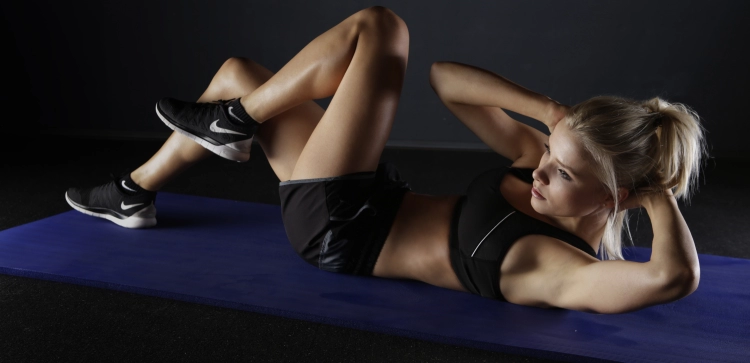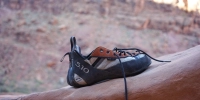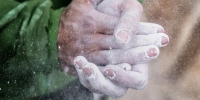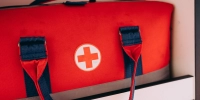Leg Power: The Importance Of Leg Strength In Climbing

While most people relate strong arms and back muscles to climbing, they tend to not realize the role leg strength plays in climbing. While strong arms and back muscles are very important in climbing, your legs are more important than you might realize, as they provide the power and stability needed to stay on the routes and to send them. Let's go into detail on why leg strength is crucial in climbing, how frequently you rely on your legs, and the most common times and moves where leg power comes into play.
- Why Is Leg Strength Important In Climbing?
- How Often Do You Use Your Legs In Climbing?
- Common Times And Moves That Utilize Leg Power
- Leg Exercises For Climbing: Building Leg Power
- Frequently Asked Questions
- How Often Should I Train My Legs For Climbing?
- Are There Any Specific Stretches To Improve Leg Flexibility For Climbing?
- Can Leg Strength Help With Endurance In Climbing?
- Should I Focus More On Lower Body Or Upper Body Strength For Climbing?
- How Can I Prevent Leg Muscle Cramps During Long Climbs?
- Are There Any Leg Exercises I Can Do At Home Without Equipment?
- Is It Necessary To Do Cardiovascular Exercises For Leg Strength In Climbing?
- Can Leg Strength Training Improve My Climbing Technique?
- Should I Incorporate Plyometric Exercises Into My Leg Training Routine?
- Final Words On Leg Strength
- Community Questions · 0
Why is Leg Strength Important in Climbing?
While your arms and upper body contribute to your overall strength, your legs are the foundation of your upward progress. Just like the roots of a tree anchor it in the ground, strong leg muscles allow you to generate power, maintain balance, and execute precise footwork on challenging routes. Neglecting leg strength can lead to fatigue, reduced performance by relying too heavily on your upper body strength, and not being able to maintain your positioning and balance on the wall.
How Often Do You Use Your Legs in Climbing?
You might be surprised by how frequently your legs come into play during a climb. Unlike the misconception that climbing is solely an upper-body workout, your legs are engaged throughout the entire ascent. From the moment you set foot on the wall to when you reach the top, your legs play an active role in every move you make. Whether you're smearing your feet on a slab, edging on tiny holds, or executing dynamic movements, your legs work tirelessly to provide stability and control. Emphasizing leg strength in your training routine will help you perform more efficiently and climb with greater ease.
Common Times and Moves That Utilize Leg Power
1. Stepping Up: When ascending a climb, you'll often encounter situations where you need to step up onto higher footholds. This requires explosive power from your legs to propel yourself upward.
2. Edging: Edging refers to using the outer edge of your climbing shoe to gain traction on small footholds. This requires quite a bit of leg strength to be able to stand on such small footholds without slipping.
3. Smearing: Smearing involves using the friction of your climbing shoes against the wall rather than relying on specific footholds. Your legs play the main role in maintaining stability and maximizing surface area contact.
4. Dynamic Moves: Dynamic movements, such as dynos and jumps, require a combination of upper body strength and explosive leg power. Your legs provide the force needed to propel yourself from one hold to another.
Leg Exercises for Climbing: Building Leg Power
Now that you understand the significance of leg strength in climbing, it's time to train those lower limbs. Here are a few effective leg exercises that you can add to your training routine:
- Squats: Squats are a fantastic compound exercise that targets the quads, hamstrings, and glutes. Start with body weight squats and gradually add weight as you progress.
- Lunges: Lunges work your quadriceps, hamstrings, and glutes while also improving balance and stability. Add variations like walking lunges or Bulgarian split squats for an extra challenge.
- Step-ups: Step-ups mimic the movements you encounter during climbing. Find a sturdy box or step, and step up onto it using one leg at a time. You can increase the difficulty by holding dumbbells or adding a knee raise at the top.
- Calf Raises: Strong calves are crucial for precise footwork and maintaining balance. Perform calf raises by standing on an elevated surface and lifting your heels, then slowly lowering them back down.
Remember to start with lighter weights and focus on proper form before progressing to heavier loads. Aim for a balanced leg workout that targets all major leg muscles to develop overall leg power.
Frequently Asked Questions
How often should I train my legs for climbing?
Just like any other muscle, depending on the intensity of the workout, aim to train your legs once or twice a week, but remember to listen to your body and give it the rest it needs, otherwise, your progress may actually be reduced.
Are there any specific stretches to improve leg flexibility for climbing?
Incorporate stretches that target the major leg muscles such as the quads, hamstrings, calves, and hip flexors. Examples include standing quad stretches, seated forward folds, calf stretches, and lunges with a hip flexor stretch.
Can leg strength help with endurance in climbing?
Yes, it can actually. Having stronger leg muscles means that you can rely on them more for certain moves, rather than relying solely on your upper body strength to pull you up. Having stronger leg muscles can help you conserve energy and strength in your upper body, which can allow you to climb longer while getting less fatigued.
Should I focus more on lower body or upper body strength for climbing?
Both upper body and lower body strength are important for climbing, but leg strength should not be neglected. While upper body strength helps with gripping and pulling, leg strength provides the foundation and power for upward progression. Aim for balance, training both your upper and lower body to achieve optimal performance rather than specifically training one more than the other.
How can I prevent leg muscle cramps during long climbs?
To prevent leg muscle cramps during long climbs, proper hydration is crucial. Make sure to drink plenty of fluids before and during your climb. Drinks with electrolytes can also be a huge help in preventing cramps. Stretching your leg muscles and performing light exercises to warm them up before climbing can also reduce the risk of cramping.
Are there any leg exercises I can do at home without equipment?
Yes! There are several leg exercises you can do at home without any equipment. Bodyweight exercises like squats, lunges, and calf raises are great for building basic leg strength. You can also include plyometric exercises like jump squats or lunge jumps to train explosiveness for moves such as dynos.
Is it necessary to do cardiovascular exercises for leg strength in climbing?
While cardiovascular exercises are not directly related to building leg strength, they can improve overall endurance, which is beneficial for climbing. Activities such as running, cycling, or stair climbing can help enhance your cardiovascular fitness, allowing you to have longer climbing sessions without tiring quickly.
Can leg strength training improve my climbing technique?
Yes, leg strength training can positively impact your climbing technique. Strong legs provide stability and allow for precise footwork, helping you maintain balance and execute movements more effectively. Improved leg strength can contribute to better body positioning and control, leading to enhanced climbing technique.
Should I incorporate plyometric exercises into my leg training routine?
Adding plyometric exercises into your leg training routine, such as box jumps or plyometric lunges, can be a great way to improve climbing performance and movement on the wall, especially for those far and hard-to-reach holds in dynos. Plyometrics help develop explosive power, which is useful for dynamic movements and quick bursts of strength.
Final words on leg strength
While climbing does in fact rely very heavily on grip strength, arm strength, and back strength, the role leg strength plays cannot be underestimated, as it can have a big impact on your climbing performance by allowing you to climb more efficiently, rely less on your upper body strength to pull you up and keep you close to the wall, and by reducing your upper body strain.













